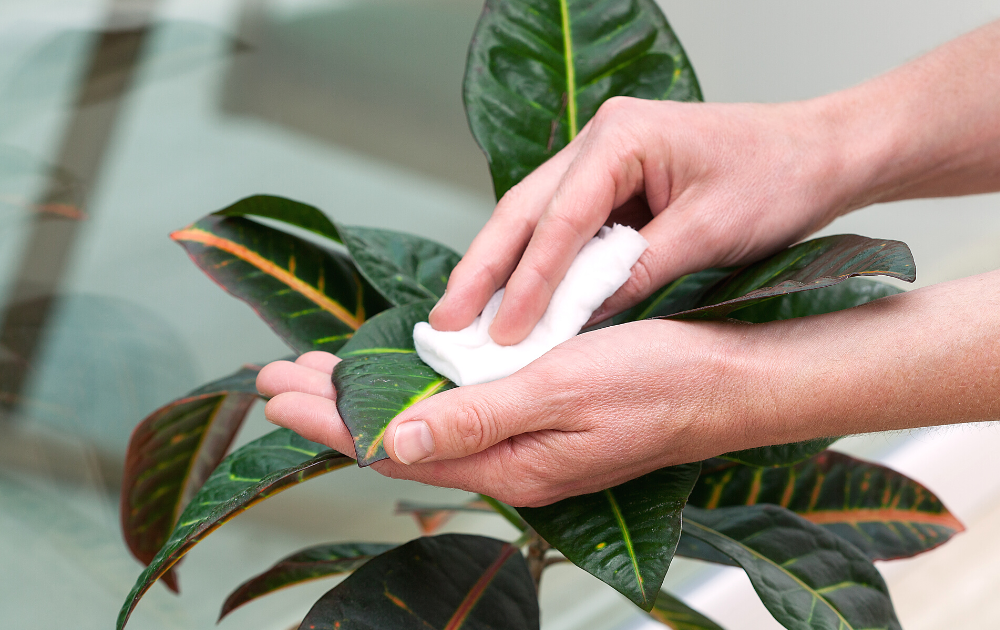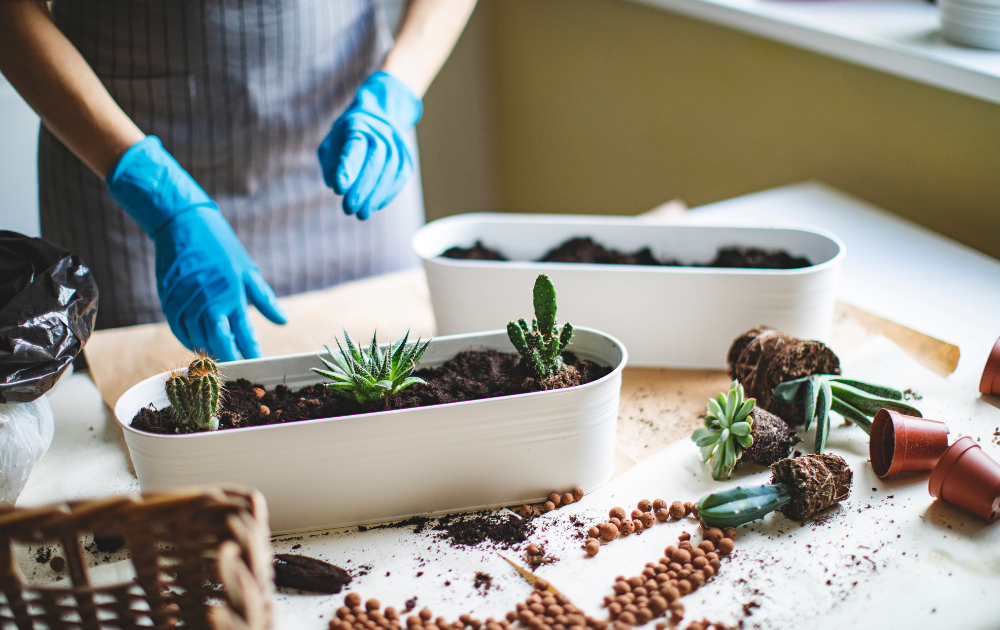Congratulations! You have decided to step into the world of Indoor Plants (and joined the rest of us Crazy Plant People! lol). “So now what?” I hear you ask?! Here at Indoor Plant Therapy we wanted to provide you with a few simple thoughts to ensure your plants continue to grow (no doubt there will be the odd death) and essentially thrive and bring you years of joy as you care for your green family! (okay, is that weird? Well, not when they don’t talk back unlike the kids!).
So here you go – a couple of indoor plant beginner handy tips:
1. Watering Your Houseplants
Not all indoor plants require the same amount of water. Thus each plant will require a variable amount of water depending on the type it is and it’s best to water them on an as need basis. Cacti or succulents require less water, flowering plants need more. Be careful to not overwater as it can easily cause your plant to turn up it’s toes! Our rule of thumb – if the top inch of the pot is dry then generally that’s a good time to water the plant. Generally, it’s better to water less than more and have too much moisture.
We find having a regular time in a week/ fortnight/ month to allocate watering time. Personally, I find Sunday is my lazy day and the perfect time to check all of the plants. (Or if you are a procrastinator then during the week can work wonders when you are trying to get some work done! Ha). For any plants I have in the bathroom, I’ll often put them in the shower or bath the day before I’m going to clean it so any dirt is collected when I clean.
2. Feed your indoor plants – they might be hungry
Keeping your indoor plants happy with fertilizer will ensure they continue to thrive and grow and for flowering plants, give you a stunning display of flowers (if they are the flowering type, of course!)! The best time to fertilize indoor plants is as the seasons change to spring or summer, this is when they generally have a growth spurt. There are loads of fertlizers around.

3. Light for survival
Sunlight can also offer benefits in feeding your indoor plant. But take care to avoid ‘cooking’ your plant in the sunlight, especially if they haven’t been in direct light for ages. Finding a suitable location for each plant can be guided by the plant tag you find in the pot upon purchase. We recommend you think about where you will locate the plant as you are buying so you can ensure their happy survival.
4. Clean the Dust from Plants
Indoor plants gather the dust from living spaces and will benefit from a gentle wash using a soft damp cloth or rinsing them under a light spray of water. For plants with more hairy leaves a gentle brush will help. Even the shower is a great place to rinse the leaves off larger plants. By removing the dust you allow the plant to absorb more light which will help the health of the plant.
5. Pest Control
Some plants, unfortunately, come home with a pest or two or they are attracted to your new plant from an existing one you already have. There are all sorts of plant pests, such as aphids, white flies, mealybugs, scale insect, spider mite and the list goes on. These can be easily identified and then we recommend chatting to your local nursery for the best product to suit your plant in the climate you live in.

6. Repotting your plants
Upon bringing your new plant home, we suggest you take a look at the root base as it could be over crowded and need some immediate attention. Simply extract the plant from it’s pot carefully so as to not damage the leaves or roots. If the plant looks to be root bound, that is, the roots are wrapping around themselves and you can see a lot of roots. They will need to be teased out gently and possibly trimmed a little, but more importantly, repotted into a larger pot (oh what a shame, you have to buy yourself another pot! lol). It is recommended you buy a good quality potting soil from your local plant shop.
These are just a few tips for caring for your indoor plants. We recommend also talking to your local nursery/ plant retailer about any problems you may have and even taking in the plant for identification of its problem. We hope you enjoyed reading this article.

Carly is a regular contributor to Indoor Plant Therapy. You’ll often find dirt under nails and a pot plant in her shopping trolley!
